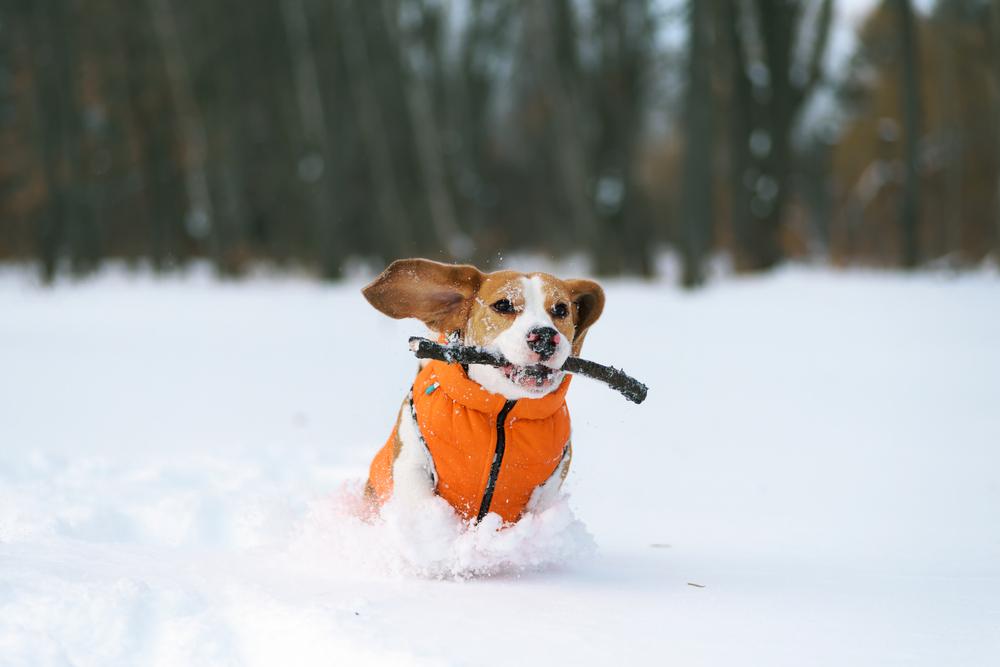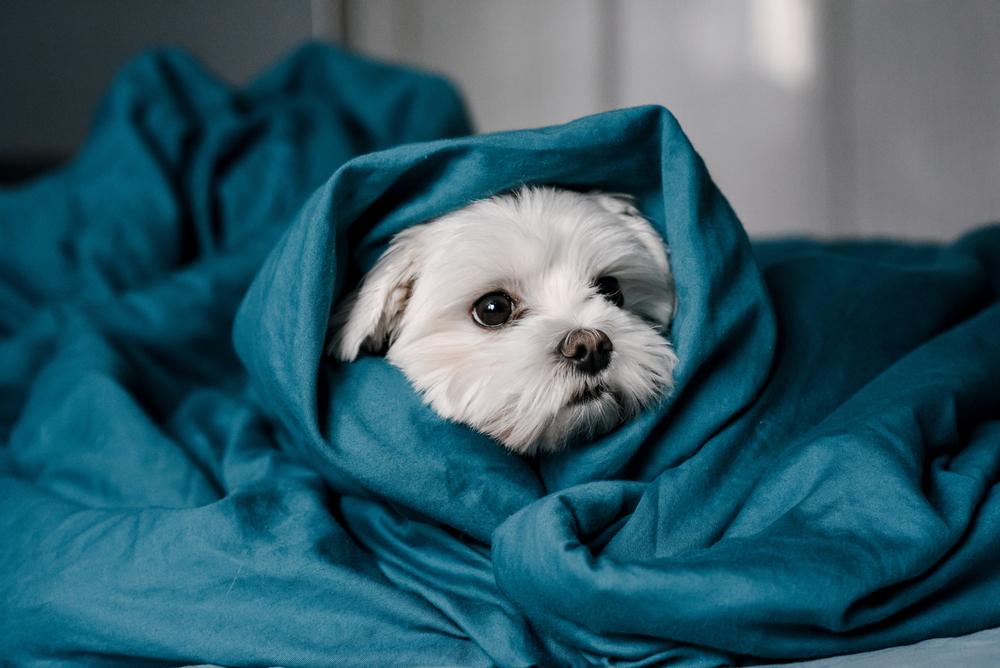

Depending on your dog, winter can be their favorite time of year or a season they tolerate. You can take steps to enhance the experience for both of you by learning how to keep a dog warm in winter outside. Playing outside together can be great fun as long as you know what to watch for and how to stay safe. But what temp is too cold for a dog, and how do you know when to come inside? Read on to learn all this and more.
Is Your Dog Built for the Cold?
Some breeds, such as huskies, Newfoundlands and Saint Bernards, were bred for colder temperatures. These are typically the types of dogs who don't want to come inside in winter. They can lie in the snow for hours and love every second.
Conversely, small breed dogs — even long-haired breeds like Maltese and Pomeranians — can't tolerate cold. While their coats look pretty, they're not insulating. They may not even be happy indoors when it's cold outside! Heat rises, so it can feel chilly low to the ground even in a warm room. Make sure these pups have a sweater or coat to wear in the house when it's cold out, and invest in a warm bed for them to cozy up in.
Keep in mind that not all large dogs are designed to tolerate cold. Your dog's coat length and amount of body fat — or lack thereof — are also key to whether they'll enjoy cold weather. Large dogs with little body fat or short hair, such as pit bulls and greyhounds, can often benefit from a sweater or coat, too. Puppies, senior dogs and dogs with chronic health issues tend not to tolerate cold temperatures as well as healthy adults.
How to Keep a Dog Warm in Winter Outside
If your dog loves to spend time outside in the winter, ensure they have a warm shelter available. Insulation and dry conditions are key for dogs in winter, so dog houses work well. Blankets and towels can get wet, which can make your dog colder. Straw and synthetic fleece tend to provide the best insulation.
Check regularly that all the materials in your dog's outdoor house are dry, and replace them as needed. Dogs can't regulate their body temperature when wet, so staying dry is critical!
Can Dogs Eat Snow to Stay Hydrated?
You might think your dog has all the water they need if there's snow on the ground, but snow can contain contaminants and other hidden dangers. Eating snow can also cause their body temperature to drop quickly.
So, provide a safe alternative by ensuring your dog has access to fresh water. Just remember water freezes quickly in winter temperatures. Consider using a heating device to keep outdoor water bowls and buckets from freezing. Check the water at least twice a day, and replace it as needed so your pup can stay hydrated.
Can a Dog Play in Snow?
Watching your dog prance around in the snow is one of the greatest joys in life, and it can be great exercise for dogs in winter. Just remember that if you're starting to get cold, they might be feeling the chill, too. Keep a close eye on them, and bring them inside at the first sign of a request.
How Do You Know if Your Dog Is Too Cold?
OK, but how can you tell if your dog is too cold? When walking on snow or ice, some dogs' paws become so cold they start limping. If your dog is holding up one foot followed by the other, return home or to your car immediately. This signals your dog's feet are cold enough to hurt, which means frostbite likely hasn't set in yet but could develop if your dog remains in those conditions. If possible, walk in a paved area free from snow and ice en route. If your dog is small enough to be picked up, that's the best option.
Some dogs will start to shiver and still not ask to come inside. If you see your dog shiver, bring them inside immediately.
Signs of Hypothermia
Hypothermia can be life-threatening. When a dog's temperature begins to drop, they'll shiver. This is the first sign to get them inside a warm area. As hypothermia progresses, they may not shiver but start to appear uncoordinated. Some dogs will act lethargic.
If you suspect hypothermia, contact your veterinarian immediately. In the meantime:
Make sure they're dry.
Bring them to a heated indoor area.
Bundle them in towels and blankets that have been warmed in the dryer.
Use a heating pad or set them up near a space heater (with close, continual supervision).
What Temp Is Too Cold for a Dog?
With so much variation between dogs — including size, age and health status — there's no universal temperature that's too cold for all dogs. Similarly, there's no magic number for how long your dog can stay outside. This depends on your dog, the weather (dry or snowy) and your activities. So, take precautions, watch for signs of discomfort and use your best judgment.
Some dogs do better with shorter, more frequent walks in winter than one or two lengthy jaunts. Stay vigilant on winter walks, as icy surfaces pose slip risks for you and your dog.
How to Keep an Outside Dog Warm in Winter With Cold Weather Gear
Part of caring for dogs in winter is outfitting them with the appropriate gear. Some dogs have more sensitive paws than others. In these cases, consider boots or shoes for winter walks, particularly in snow or ice. Allow your dog to get accustomed to winter gear by practicing wearing it inside (treats help!) before you leave the house. Your dog may not like wearing boots or a jacket at first, but the excitement of a walk can take their mind off it.

Keeping your dog warm also means keeping them dry. Sweaters and coats can make it easy to remove snow from fluffy dogs after they've been outside. For small breed dogs who like to wear sweaters inside, have separate outside and inside gear.
As with anything you put on your dog, ensure any cold weather gear fits properly. If your dog looks uncomfortable, there might be a reason — sweaters can rub and boots can be too tight. If you aren't sure what the right fit looks like, ask your vet for help.
Enjoying Winter With Your Dog
Many dogs can enjoy the cold weather with a little preparation and awareness. While some dogs refuse to come inside from the snow, others prefer to snuggle with you under a blanket, and that's OK too. Whether your dog frolics outside or stays inside with a sweater on, everyone can enjoy the cold weather in their own way.
























